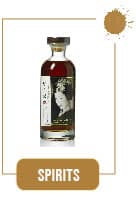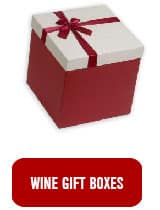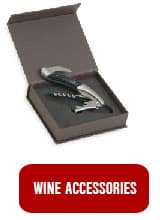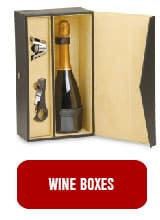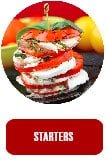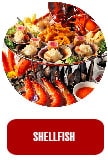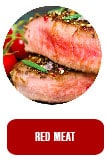No products
list of wineries
-
Cantine Isole e Olena
The name “Isole e Olena” was conceived in the 1950’s when two adjoining estates, “Isole” and “Olena” were purchased by the De Marchi family and were combined to form one.
The winery is is located on the western slope of the Chianti Classico hills exactly half way between Florence and Siena.
-
Caol Ila
Built in 1846, Caol Ila is the largest of the eight distilleries scattered across the Isle of Islay on the west of Scotland.
-
Capannelle
The history of Capannelle wine producing dates back to 1974, when Raffaele Rossetti, a 40 year old business man in Rome, decided to purchase an old XVI century farmhouse in the heart of Chianti.
Capannelle produces wine in Gaiole in Chianti, Siena, extends over about 20 hectares (16 of Vineyard) and produces about 80.000 bottles of wine a year.
The owner is James B. Sherwood, founder and shareholder of the Orient – Express Hotels LTD., which owns some of the world’s most beautiful hotels.
-
Cardinale Estate
"Cardinale, located in Napa Valley’s world-renowned Oakville District, crafts a single Cabernet Sauvignon from each vintage.
The wine is a limited-production blend from Napa Valley’s most celebrated mountain appellations, including Diamond Mountain, Howell Mountain, Mount Veeder, and Spring Mountain. Each esteemed mountain vineyard creates a beautiful note unto itself, but the composition they create together results in a remarkable symphony of flavor, texture, and complexity."
Source: http://www.jacksonfamilywines.com/en/our-wineries/cardinale
-
carter cellars
Carter Cellars (not to be confused with Carter Estate Winery and Resort in Temecula, CA) was founded in 1998 by Mark Carter, a longtime resident of Eureka, California. Today Mark divides his time between Eureka, Napa Valley and Kentucky. During harvest especially he helps oversee winemaking operations at Envy Cellars which is where Carter Cellars is produced. Envy Winery is co-owned by Mark and winemaker Nils Venge.
Long time industry veterans, Nils and Mark have built strong relationships with growers over the years and source grapes from some of the valley’s most premiere vineyards. Some of these sites (all Napa) include vineyards with instant name recognition, IE., the Beckstoffer managed To Kalon Vineyard in Oakville and Las Piedras in St. Helena.
-
Casa Lapostolle
Buy Chilean Wines Online - Discover Casa Lapostolle
Casa Lapostolle: The Excellence of Chile at Your Fingertips
Founded in 1994 by Alexandra Marnier-Lapostolle and Cyril de Bournet, Casa Lapostolle has become a key name in the world of high-end Chilean wines. With its biodynamic farming philosophy, the estate stands out for producing exceptional wines that embody the richness and diversity of Chile’s terroirs. The Apalta Valley, one of the country's premier wine regions, is home to vines over 80 years old, which give birth to wines with unique aging potential.
Clos Apalta - A Masterpiece to Discover
The Clos Apalta is undoubtedly the flagship wine of the estate, internationally recognized for its unmatched quality. Ranked number one by Wine Spectator in 2008, this rich and complex wine, made from Carmenère, Cabernet Sauvignon, and Merlot, offers an unforgettable tasting experience. Its aging potential makes it an ideal choice for wine collectors.Why Buy Casa Lapostolle Wines?
Casa Lapostolle wines are synonymous with quality and excellence. The estate offers unique cuvées that improve with time, providing wine lovers and collectors with an exceptional tasting journey. Clos Apalta and Cuvée Alexandre are must-have selections for those looking to enhance their collection with prestigious Chilean wines.Perfect Food Pairings
- Clos Apalta: Ideal with braised meats, roast game, or mature cheeses like Comté.
- Cuvée Alexandre: Best enjoyed with grilled red meats, beef steaks, or spicy dishes.
Buy Chilean Wines Online
Treat yourself to the finest Chilean wines online with Casa Lapostolle. With its biodynamic viticulture practices and commitment to quality, every bottle from this estate is a valuable investment for collectors and connoisseurs of prestigious wines. Shop now for your bottles of Clos Apalta and other exceptional cuvées to enrich your wine cellar with high-quality Chilean wines.High-End Chilean Wines – Discover Casa Lapostolle Today
-
Cascina Fontana
Sixth-generation Mario Fontana is among Barolo’s best-loved producers. His wines are undeniably Burgundian in style; his combination of artisanal purity and finesse is as evident in his Dolcetto as his Barolo. Mario follows organic methods but doesn’t seek certification; his philosophy is individual, guided by genuine skills learnt from his father, and his father before him. While many can be blindsided by stoic traditions, Mario is free-minded. His wines are timeless examples of great Barolo, positively charged and yet cutting edge.
From vineyard practices to vinification, Mario keeps his options open at every step. His son Valdo has recently joined him in the cantina, and one can feel the flow of energy and passion ebbing through this generational transition. Although his vineyards and cantina are spread through the region, Fontana’s greatest achievements are rooted in their ancestral hometown of Castiglione Falletto.
-
Castello Banfi
Castello Banfi is a family-owned vineyard estate and winery located in the Brunello region of Tuscany. This award-winning estate was founded on the philosophy of blending tradition with innovation, and is recognized as a pioneer in elevating the standards of Italian winemaking.
-
Castello dei Rampolla
Castello dei Rampolla: A Historic Winery in Chianti Classico, Tuscany
Castello dei Rampolla is one of the most prestigious wineries in Chianti Classico, located in Panzano, the heart of Tuscany. Founded in 1965 by the Di Napoli-Rampolla family, the estate is one of the oldest wine producers in the region. Since its inception, it has played a pioneering role in high-quality viticulture, especially with the introduction of biodynamic practices in the 1990s.
The Vigna d'Alceo: The Jewel of the Estate
The estate's flagship, the Vigna d'Alceo, was planted in 1990 by Alceo Di Napoli. Located on the top of the estate's hill with a perfect southward exposure, this plot benefits from an ideal microclimate that allows grape varieties such as Cabernet Sauvignon and Petit Verdot to ripen to perfection. This exceptional terroir produces wines of great complexity, reflecting a unique winemaking philosophy and respect for the environment.
An Exceptional Wine: The First Vintage and International Recognition
The first vintage of Vigna d'Alceo was produced in 1996. Since then, this exceptional wine has gained the admiration of wine enthusiasts worldwide. In 2005, d'Alceo was named "best red wine of Italy" by the Italian Sommelier Association (AIS), a prestigious accolade that solidified the estate's international reputation.
Viticulture Methods and Philosophy
The Castello dei Rampolla estate is firmly committed to biodynamic viticulture. Since 1994, biodynamic practices have been embraced to ensure the purity of the wine, while respecting the terroir and promoting biodiversity. The estate favors low yields of around 35 hectoliters per hectare to produce wines that are concentrated, balanced, and refined.
Why Choose a Wine from Castello dei Rampolla?
✔ Exceptional biodynamic wines respectful of the environment
✔ Unique Chianti Classico terroir offering rare aromatic complexity
✔ Award-winning wines, recognized as some of Italy's best
✔ Limited production, ensuring exclusive winesWhether you're a fan of Tuscan wines or a connoisseur of fine wines, Castello dei Rampolla wines will captivate you with their mineral character, perfect balance, and long aging potential.
-
Castello della Sala
A short distance from the historic city of Orvieto, Castello della Sala towers its scenic landscape as Antinori’s only fully Umbrian estate.
Spread across 500-hectares, the Antinori family uses 140-hectares of this pleasant property for the production of Chardonnay, in addition to several other indigenous and aromatic white varietals, Procanico and Grechetto, as well as a limited amounts of non-traditional varieties.
It’s most famous wines are Cervaro della Sala – a vibrant yellow, crisp blend of Chardonnay and Grechetto – and its second wine, a pure Chardonnay – Bramito del Cervo.
-
Castello di Ama
According to Robert Parker, no single producter has done more to promote an upscale image for Chianti Classico than Marco Pallanti and Castello di Ama.
Castello Di Ama is unique, employing its best Sangiovese to produce Chianti Classico, unlike many Tuscan producers who have chosen to blend their best Sangiovese into Vini da Tavola or Super Tuscans.
The crus of Bellavista and La Casuccia are produced only in outstanding vintages and in extremely limited quantity. These wines in their concentration, harmony and overall elegance represent the best expression of Sangiovese in Tuscany.
Ama also produces the distinctive single-vineyard Merlot l'Apparita from the upper portion of the Bellavista vineyard.
-
Castillo Perelada
Wine has been made at the Castillo Perelada since the Middle Ages, as shown in several documents and parchments from the period to be found in the library. When Miguel Mateu bought this ensemble of monuments in 1923, one of his primary objectives was to revitalize the wine producing tradition.
Making the best of the excellent land and climate in the Empordà region, Castillo Peralada is nowadays one of the leading wineries in Spain.
100 % in stock
All of our products are avalaible on stock
Quick delivery
Your order will be shipped in 48 hours in a packaging provided for this purpose
Free delivery
Free shipment fees for orders over 1000 CHF (in Switzerland)
Free pickup in Geneva
In order to avoid shipping fees, your order can be picked up directly in our cellars or shop in Geneva
Your fidelity rewarded
2 % off







